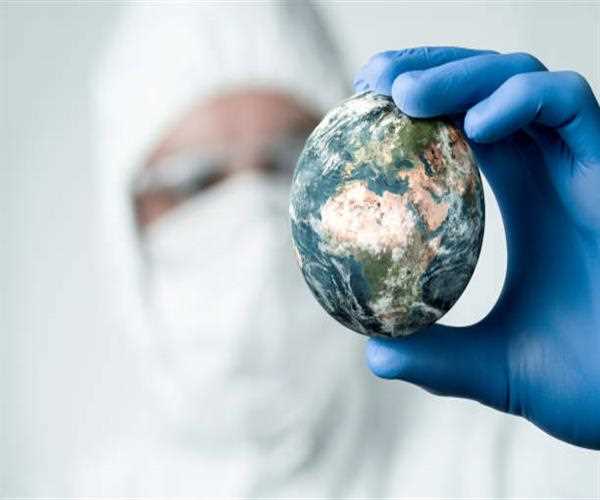
19-Jul-2023 , Updated on 7/19/2023 10:32:19 PM
How global warming surges the after-effects on human health
Highlights
- Rising sea levels- Rising sea levels are one of the most immediate and visible impacts of global warming. As the planet warms, the ice caps and glaciers are melting, which is causing sea levels to rise. This is already having a significant impact on coastal communities around the world, and it is expected to get worse in the future.
- More extreme weather events- The planet is becoming warmer and wetter, which is leading to more frequent and intense storms, floods, droughts, and wildfires. These events can cause widespread damage and loss of life.
- Changes in agricultural yields- As the planet warms, some crops are becoming more difficult to grow, while others are becoming more susceptible to pests and diseases. This is leading to food shortages and price increases in some parts of the world.
- The spread of diseases- As the planet warms, mosquitoes and other disease-carrying insects are expanding their range. This is leading to an increase in the number of people who are at risk of contracting diseases such as malaria, dengue fever, and yellow fever
The term "global warming" refers to the long-term warming of Earth's climate system that has been observed since the pre-industrial period (between 1850 and 1900) as a result of human activities, primarily the burning of fossil fuels, which raise atmospheric levels of heat-trapping greenhouse gases.
Despite the fact that climate change refers to both human-caused and naturally occurring warming and its effects on our planet, the two terms are frequently used interchangeably. It is most ordinarily estimated as the normal expansion in Earth's worldwide surface temperature.
It is estimated that human activities have raised Earth's average temperature by about 1 degree Celsius (1.8 degrees Fahrenheit) since the pre-industrial period. This temperature rises by 0.2 degrees Celsius (0.36 degrees Fahrenheit) per decade at the moment. A large portion of the ongoing warming pattern is very logical (more noteworthy than 95% likelihood) the consequence of human movement since the 1950s and is continuing at an uncommon rate over a long time to centuries.
The impacts of global warming are already being felt around the world, and they are expected to become more severe in the future. These impacts include rising sea levels, more extreme weather events, changes in agricultural yields, and the spread of diseases.
- Rising sea levels are one of the most immediate and visible impacts of global warming. As the planet warms, the ice caps and glaciers are melting, which is causing sea levels to rise. This is already having a significant impact on coastal communities around the world, and it is expected to get worse in the future.
- More extreme weather events are another major impact of global warming. The planet is becoming warmer and wetter, which is leading to more frequent and intense storms, floods, droughts, and wildfires. These events can cause widespread damage and loss of life.
- Changes in agricultural yields are also being caused by global warming. As the planet warms, some crops are becoming more difficult to grow, while others are becoming more susceptible to pests and diseases. This is leading to food shortages and price increases in some parts of the world.
- The spread of diseases is another concern associated with global warming. As the planet warms, mosquitoes and other disease-carrying insects are expanding their range. This is leading to an increase in the number of people who are at risk of contracting diseases such as malaria, dengue fever, and yellow fever.
The impacts of global warming on human health are serious and widespread. It is vital to make a move to decrease ozone-harming substance emanations and moderate the impacts of an Earth-wide temperature boost. Governments can also take action by investing in renewable energy sources and developing policies to reduce greenhouse gas emissions.
How can global warming affect human health directly?
- Global warming can affect human health directly in a number of ways. For example, heat waves can cause heatstroke and other heat-related illnesses. Air pollution can also be made worse by global warming, leading to respiratory problems such as asthma and bronchitis.
- In addition, global warming can indirectly affect human health by causing changes in the environment. For example, rising sea levels can lead to flooding, which can spread disease and displace people. Changes in agricultural yields can also lead to food shortages, which can increase malnutrition and other health problems.

What are the health risks of global warming?
The health risks of global warming are significant and varied. Some of the most serious health risks include:
- Heat-related illnesses- Heat waves can cause heatstroke, which is a life-threatening condition. Heatstroke can occur when the body's temperature rises above 103 degrees Fahrenheit. Symptoms of heatstroke include hot, dry skin, rapid breathing, and a rapid heart rate.
- Air pollution- Air pollution can be made worse by global warming. Air contamination can create respiratory issues like asthma and bronchitis. It can also increase the risk of heart disease and stroke.
- Waterborne diseases- Climate change can lead to changes in water quality, which can increase the risk of waterborne diseases such as cholera and typhoid fever.
- Vector-borne diseases- Mosquitoes and other insects that carry diseases can spread these diseases more easily in warmer weather. This can lead to an increase in cases of diseases such as malaria, dengue fever, and yellow fever.
- Malnutrition- Climate change can disrupt agricultural production, which can lead to food shortages and malnutrition. Malnutrition can increase the risk of a number of health problems, including stunting, wasting, and death.
- Mental health problems- Climate change can also have a negative impact on mental health. People who are exposed to extreme weather events, displacement, or other climate-related stressors are more likely to experience anxiety, depression, and post-traumatic stress disorder (PTSD).
But as you are aware, it is preferable to adopt preventive measures
There are a number of things that can be done to reduce the health risks of global warming. These include:
- Reducing greenhouse gas emissions-This is the most important step in reducing the risks of global warming. There are a number of things that individuals and governments can do to reduce greenhouse gas emissions, such as driving less, using less energy, and investing in renewable energy sources.
- Adapting to the impacts of climate change- Even if we are able to reduce greenhouse gas emissions, some of the impacts of climate change are already happening. We need to adapt to these impacts to reduce their health risks. This includes measures such as building seawalls to protect coastal communities from flooding, developing drought-resistant crops, and providing health care to people who are affected by climate-related disasters.
- Building resilience- We also need to build resilience to the impacts of climate change. This means investing in infrastructure and social programs that will help people cope with the effects of climate change. This includes measures such as improving early warning systems for extreme weather events, providing disaster relief, and developing programs to help people adapt to changes in agricultural yields.
The health risks of global warming are serious and widespread. However, there are a number of things that can be done to reduce these risks. By taking action now, we can protect ourselves and future generations from the harmful effects of climate change.

SEO and Content Writer
I am Drishan vig. I used to write blogs, articles, and stories in a way that entices the audience. I assure you that consistency, style, and tone must be met while writing the content. Working with the clients like bfc, varthana, ITC hotels, indusind, mumpa, mollydolly etc. has made me realized that writing content is not enough but doing seo is the first thing for it.
Join Our Newsletter
Subscribe to our newsletter to receive emails about new views posts, releases and updates.
Copyright 2010 - 2025 MindStick Software Pvt. Ltd. All Rights Reserved Privacy Policy | Terms & Conditions | Cookie Policy